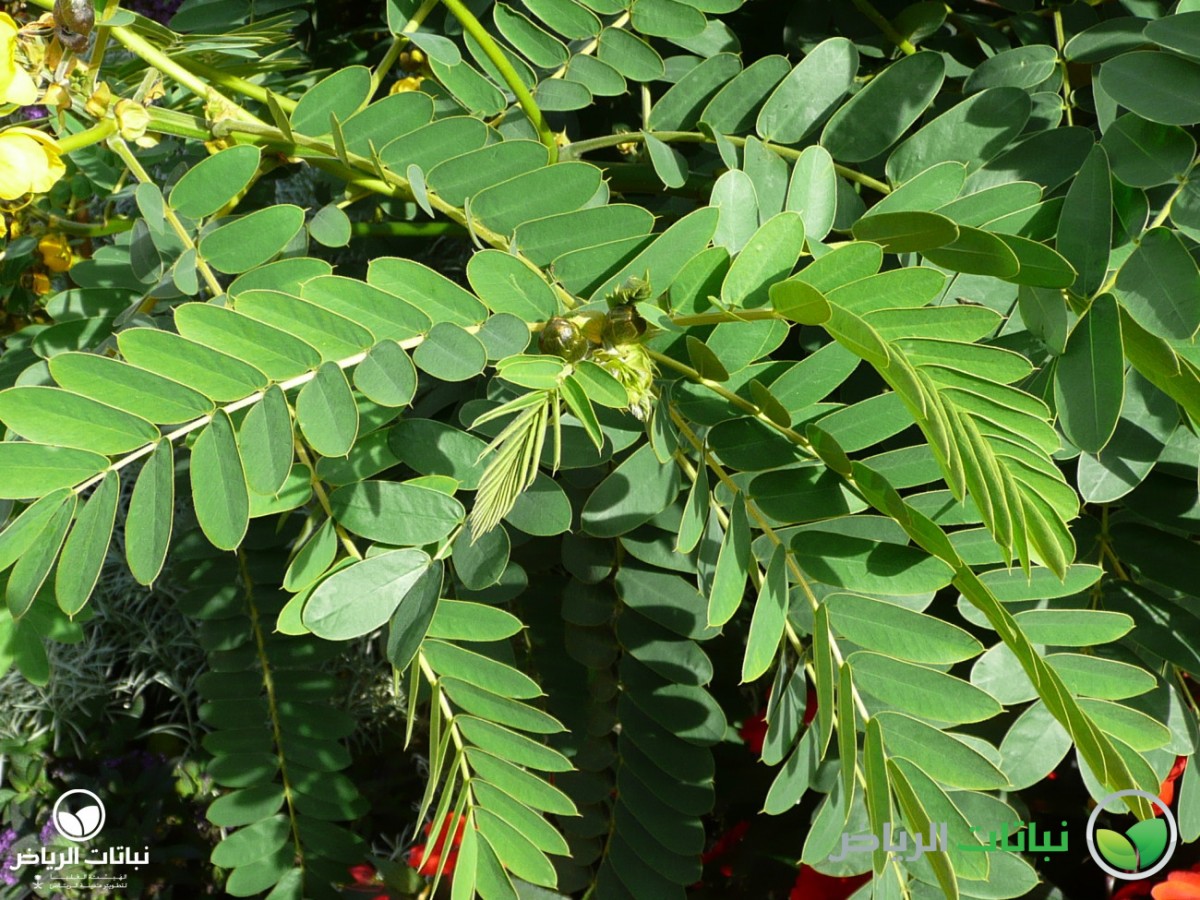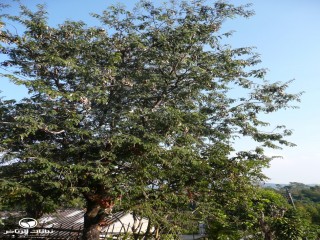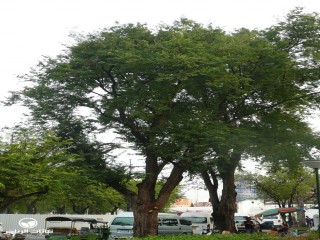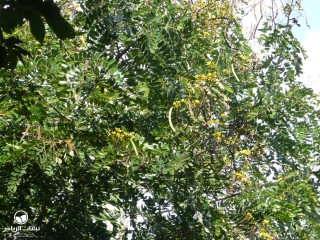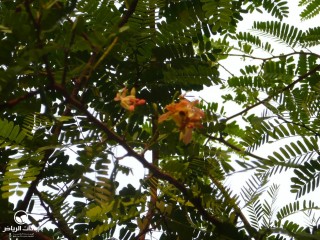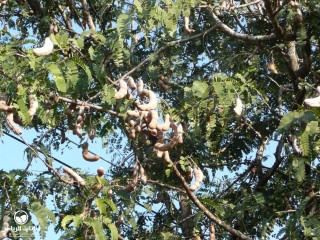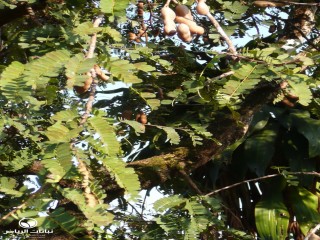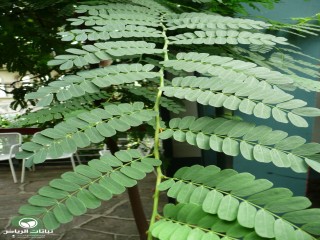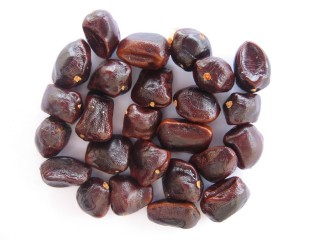Riyadh Plants
Tamarind Tree, tamar hindi
The Tamarind Tree, native to Africa and southeast Asia, and known in Arabic as tamar hindi, is a large, slow-growing tree which can reach up to 20 metres high. It has a rounded, dense crown of foliage, a short massive trunk and drooping branches. The bright-green, fine, feathery leaves are evergreen, elliptical and pinnately compound, with 10–18 pairs of 2-cm oblong leaflets. The leaflets close up at night. The Tamarind drops its leaves in dry seasons. It flowers inconspicuously, with red and yellow elongated flowers borne in small racemes. The velvety, cinnamon-brown pods are up to 15 cm long, sausage-shaped and constricted between the seeds. The fleshy, juicy pulp surrounding the seeds is both sweet and sour. Highly wind-resistant, the tree grows best in full sun in clay, loam, deep alluvial and acidic soils, as well as on limestone, and is moderately salt-tolerant. It is also frost-sensitive; young trees should be protected from cold. Although fairly drought-tolerant, the Tamarind needs regular irrigation. Propagation is by seed and also from cuttings, or air-layering. One of the major pests is the Oriental yellow scale, as well as several other scale species and insects such as mealybugs, nematodes, caterpillars, whitefly, thrips, cow bugs and the tamarind beetle. A bacterial leaf-spot may also occur. Tamarinds are grown as ornamental shade and street trees, and for their edible pods: beautiful and fine-textured, they make excellent specimen trees. Often planted in parks, once established they need very little attention.
